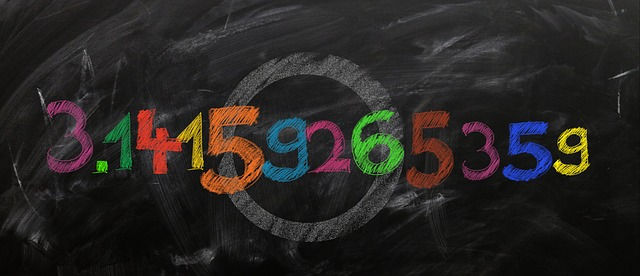Fractions, decimals and other numbers you need to know about
- Justin McCarthy

- Oct 8, 2020
- 4 min read

Numbers are so important and we all know it.
They are used to count and measure, and we give the numerical values “names”.
Numbers have been around in some form or other for over 5,000 years, with the number 0 making its first appearance around 628 A.D.
In my first real job, I worked at a bank. One day, a member of my team made a terrible mistake and changed the position of a comma. It put our accounts into the red for one whole day without anybody realising, and we ended up getting a fine from the Central Bank.
Numbers are important.
You get it wrong and you can mess everything up.
That’s why, in this blog, I’m going to teach you about #fractions, #decimals and other #numbers you need to know.

HI, I’M A FRACTION
What is a fraction? Basically, it is a number that is not a whole number.
It is a part of something.
½ is a commonly used fraction.
So is ¼.
How do we actually “say” fractions.
Well, the number above the line in a faction is a cardinal number.
WHAT IS A CARDINAL NUMBER?
Well, it´s a number which describes quantity. In very basic terms, it’s an “ordinary” number like 3, or 7. Or even 27.
The bottom number in a fraction is a ordinal number.

WHAT’S AN ORDINAL NUMBER?
These are numbers we use to describe the position of an item in a list. So, we might say 5th or 9th or 12th, to describe item number 5, item number 9 or item number 12 (in a list, as I mentioned above).
1/3 is one-third
1/7 is one-seventh.
1/27 is one-twenty-seventh
When the number above the line is greater than 1, (that is, 2, 3 or even 27), we have to use the plural form of the ordinal number.
So, 2/5 is two-fifths.
2/6 is two-sixths. Try saying that when you have a few beers. Or with your false teeth out.
2/8 is two-eighths. Another tongue twister.
There are a few irregular fractions, where the ordinal number is not used.
½ is “a half”.
¼ is “a quarter”.

HI, I’M A DECIMAL
In very simplistic terms, a decimal number is one that has a decimal point followed by a series of numbers which in themselves have a value smaller than one.
0.01 = 1/100th
We already know how to say the fraction, (one-hundredth), but how the hell do we say the decimal number?
Ha HA HAAAA!
It’s actually really easy.
All you need to do is say the whole number before the decimal point as you see it, then the word point (to describe the decimal), and each of the numbers after the decimal point are read separately, that is, as separate numbers.
Here are some examples to make it crystal clear.
1.125 = one point one two five
7.5275 = seven point five two seven five
0.025 = O point O two five
We often replace the word zero with the letter O. We like the letter O in Ireland. And in the UK.
WHAT’S A RECURRING DECIMAL?
Sometimes, series of digits repeat themselves after a decimal point. You could say one point three three three three three three three three if you saw the number 1.33333333. In fact, you could keep saying the number three ad finitum until you die. Or, you could, after the first number three, stop and replace all the other threes with the word recurring.
1.3 recurring = 1.33333333333
If two numbers are repeated after the decimal point, (1.18181818…) we can say the numbers that are repeated once, and then the word recurring – 1.18 recurring.

HI, I’M AN EXPONENT
A what?
A … WHAT?
Let me show you some examples using the letters and numbers in the adjoining photos (seeing as superscript text is not supported on this website.... ).
We can see an a, a b and a c, all of which are followed by a mini number 2 placed above the letter. In the real world, these letters would also be numbers and the combination of the two is known as an exponent.
But how do we actually say them?
Well, we say a to the power of 2.
B to the power of 2.
And guess what, c to the power of 2.
If a is 5, the a to the power of 2 is 25.
We can also use the word squared to describe any number that is to the power of 2.

If you are not cross-eyed by now, you’ll be relieved to hear that we are finished with numbers for the day. There is only so much that I can take. I was never that great at Mathematics or Maths (as we call it in Ireland) when I was at school. But there is one thing I know to be true.
You need to know your numbers.
And how to describe them.
And now you do.
At least, some of the more difficult ones.
Don’t you feel great?
For more about numbers, subscribe to my website.
Keep reading.
Keep improving.
You are Just in Time for Justin!



コメント